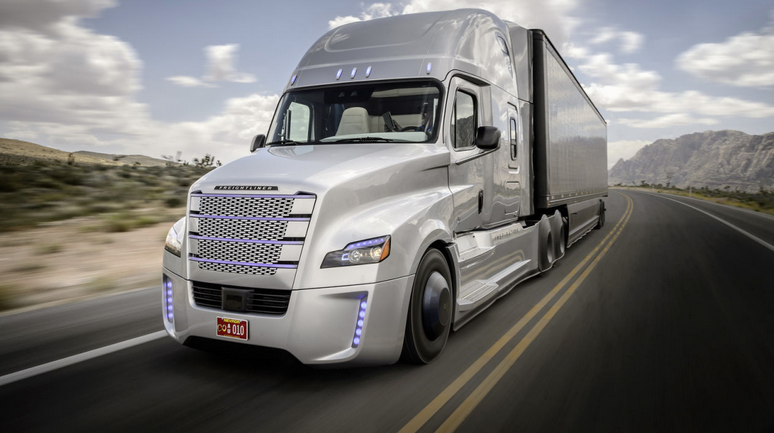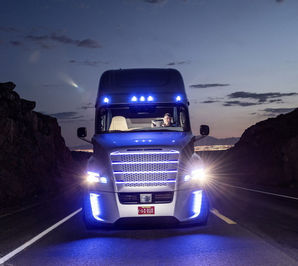The First Self-Driving Semi

Self-driving cars have been in the public consciousness for some time. Most people are enthusiastic about the concept, but what about large trucks like tractor-trailers? Daimler-Chrysler’s Freightliner Inspiration, a D-C 18-wheeler, is the first autonomous semi-truck in the world. Due to the size of these vehicles, public opinion is apt to be a bit less favorable. Considering the benefits autonomous semis bring to the table — improved fuel efficiency, safety and cost-effectiveness, to name a few — chances are that people will come around sooner or later. At any rate, they have a good decade to get used to the idea.
The Freightliner Inspiration is strictly designed for use on freeways, where short- and long-range radars help it maintain a safe distance from other drivers. A stereoscopic camera reads lane lines to keep it safely within its lane. If the truck encounters problematic driving conditions like icy roads, it notifies the driver to take over. If that doesn’t happen within five seconds or so, the truck gradually slows until it stops completely. Additionally, the truck will not pass slower vehicles on its own; that will also be up to the human driver, if one is present.
 Daimler-Chrysler intends to put the truck through more than a million test miles of various conditions and geographic locations before putting it into actual service, and that will take at least a decade. Regardless, officials within the trucking industry are eager to put the technology into use. The shortage of qualified drivers is one reason for the urgency; the American Trucking Association predicts a shortage approaching 240,000 drivers by 2022. Safety, of course, is another issue. In 2012, nearly 4,000 people were killed in the more than 330,000 large truck accidents that occurred in the U.S. Incredibly, around 90 percent were caused by human error.
Daimler-Chrysler intends to put the truck through more than a million test miles of various conditions and geographic locations before putting it into actual service, and that will take at least a decade. Regardless, officials within the trucking industry are eager to put the technology into use. The shortage of qualified drivers is one reason for the urgency; the American Trucking Association predicts a shortage approaching 240,000 drivers by 2022. Safety, of course, is another issue. In 2012, nearly 4,000 people were killed in the more than 330,000 large truck accidents that occurred in the U.S. Incredibly, around 90 percent were caused by human error.
There are other benefits that go along with self-driving semis too. Down the line, one truck with a human driver could lead several other driverless trucks, saving huge amounts of money in terms of manpower and fuel. Not surprisingly, truck drivers aren’t thrilled about the news, but the implementation of this technology is pretty much a foregone conclusion at this point. While the idea of massive trucks cruising along freeways may freak out everyday people a little, public opinion is sure to swing in its favor by the time these trucks are ready to hit the nation’s roads.
